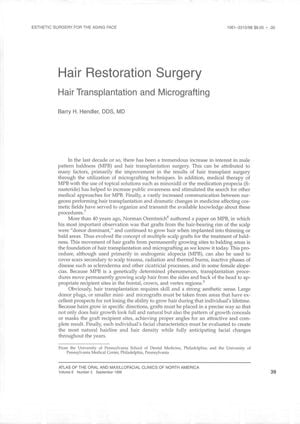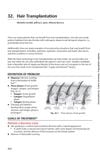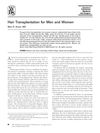Hair Restoration Surgery: Hair Transplantation and Micrografting
September 1998
in “
Atlas of the oral and maxillofacial surgery clinics of North America
”
hair transplantation micrografting male pattern baldness female alopecia hair follicles donor sites anterior frontal hairline local anesthesia vasoconstrictors grafts recipient sites postoperative care bleeding edema infection hypertrophic scarring hair transplant hair grafting baldness hair loss hair donor area hairline anesthesia blood vessel constrictors hair grafts hair recipient area aftercare swelling scarring

TLDR Hair transplantation and micrografting, used for baldness, involve moving hair follicles from hair-rich to bald areas, requiring careful procedure and post-care for success.
In the late 90s, hair transplantation and micrografting saw increased interest due to improved results. The procedures, primarily used for male pattern baldness and some female alopecias, involved moving hair follicles from hair-rich to thinning or bald areas. The success of these procedures depended on the careful selection of donor sites and the positioning of the anterior frontal hairline. The process required local anesthesia and vasoconstrictors, and the grafts, containing one to seven hairs, were inserted into prepared recipient sites. Postoperative care was crucial, and potential complications included bleeding, edema, infection, and hypertrophic scarring. The document stressed the importance of a well-trained transplant team for successful outcomes.





